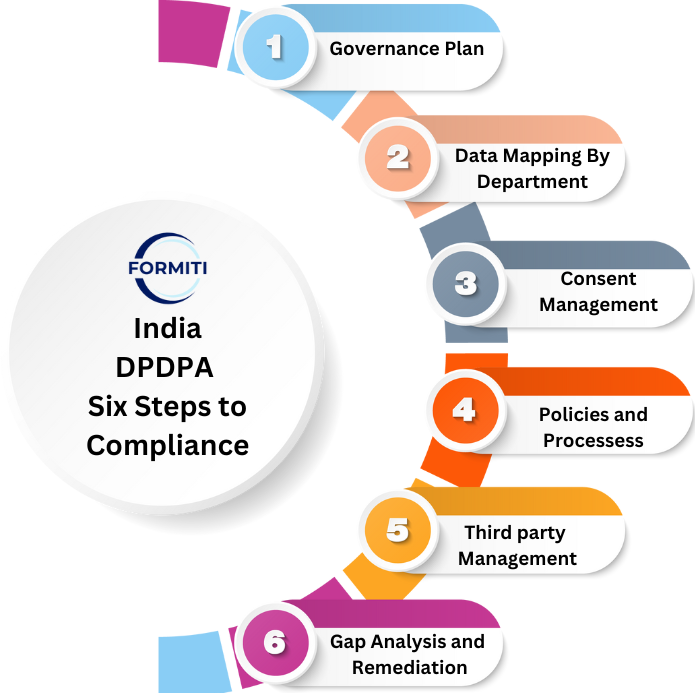Hey There, Data Protectors!
Are you ready for the upcoming enforcement date of India’s Digital Personal Data Protection Act (DPDPA)? It’s time for organisations across the nation to buckle up and ensure they are fully compliant with the new regulations. Remember, failure to comply can lead to hefty fines and serious damage to your brand’s reputation. Fear not, for in this article, we’ve outlined the six essential steps Indian companies need to take to sail smoothly through the DPDPA compliance journey.
1. Governance Planning
Let’s start strong with effective governance planning as the foundation of your data privacy compliance programme. Get things rolling by appointing a Data Protection Officer (DPO) to oversee compliance efforts and forming a stellar data protection team to support them. Don’t forget to develop a comprehensive data protection strategy that aligns perfectly with your organisation’s goals and regulatory requirements. This step ensures everyone in your organisation knows their role in maintaining top-notch data privacy standards.
2. Data Mapping by Department
Time to put your detective hats on and dive into data mapping by department. Identify and document the flow of personal data within your organisation. What data is collected and processed? How is it used, stored, and transmitted? Who has access to it? This exercise helps you understand your data landscape, spot risks, and implement the right safeguards to protect personal information.
3. Consent Management
Consent is key under the DPDPA. Make sure you obtain valid consent from data subjects in a clear, informed, and specific manner. Transparency is key, so provide individuals with clear information on how their data will be used and give them the power to withdraw consent at any time. Building trust with customers through effective consent management is a win-win!
4. Policies and Processes
Time to nail down those data protection policies and processes. Outline your organisation’s commitment to safeguarding personal information, set up procedures for handling data breaches, and ensure your employees are well-trained on data protection best practices. Regularly review and update these policies to keep up with evolving regulatory requirements.
5. Third-Party Management and Contracts
Don’t forget about your third-party vendors who process personal data on your behalf. Conduct due diligence, include data protection clauses in contracts, and monitor third-party practices regularly to ensure compliance. Effective third-party management reduces risks and ensures everyone is on the same page when it comes to data protection.
6. Gap Analysis and Remediation
Time for a comprehensive gap analysis to identify areas where your current practices fall short of DPDPA requirements. Review existing measures, spot gaps, and develop a remediation plan to bridge those gaps. Regular analysis and remediation efforts keep you on track with compliance and help improve your data protection practices continuously.
7: Penalties for Non-Compliance
Remember, non-compliance with the DPDPA can lead to severe penalties, including hefty fines or a percentage of your global turnover. Beyond the financial hit, non-compliance can tarnish your brand, erode customer trust, and even lead to legal action. Prioritise compliance to avoid these repercussions and maintain your reputation in the market.
Conclusion
Getting compliant with India’s DPDPA is no walk in the park, but it’s essential for organisations. By following these six steps—governance planning, data mapping, consent management, policies and processes, third-party management, and gap analysis—you can meet regulatory requirements and protect personal data like a pro.
Formiti Data International Ltd is here to support Indian organisations in their DPDPA compliance journey. Our expert consultants are ready to help you develop tailored strategies and ensure you’re fully prepared for the new law. Reach out today to learn how we can assist you in achieving and maintaining DPDPA compliance!


